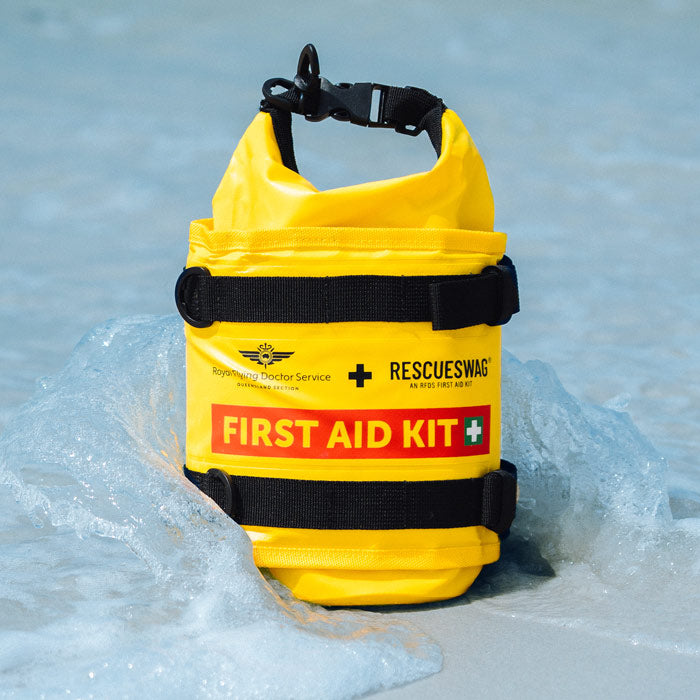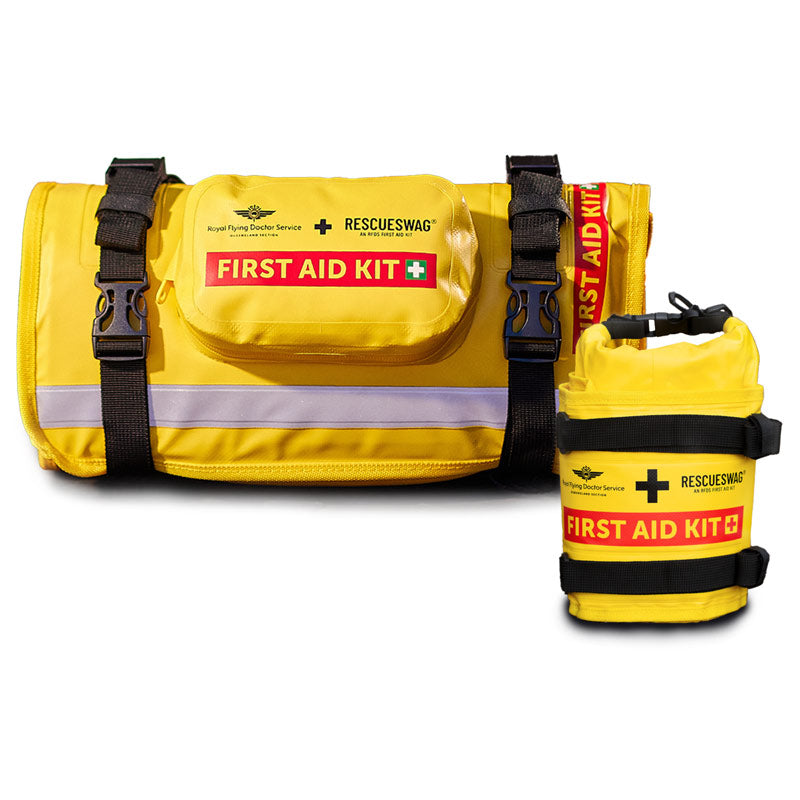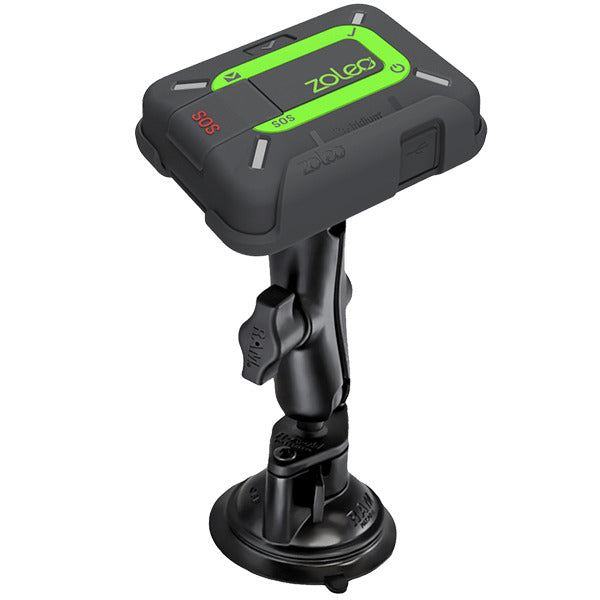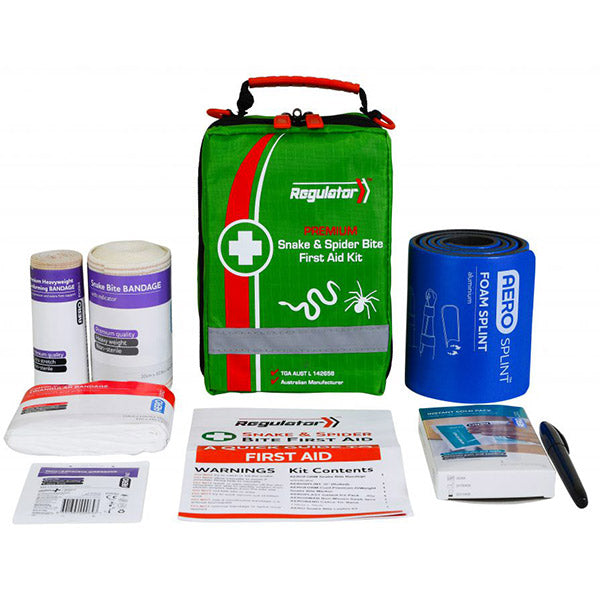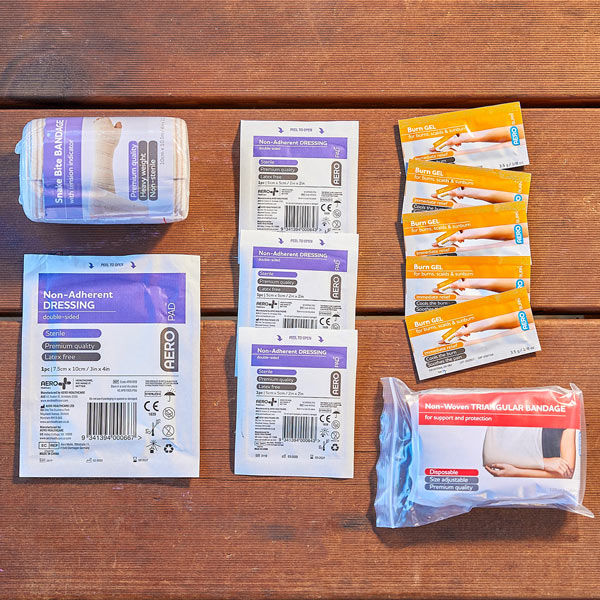Everything you need to know about Australian spider bites
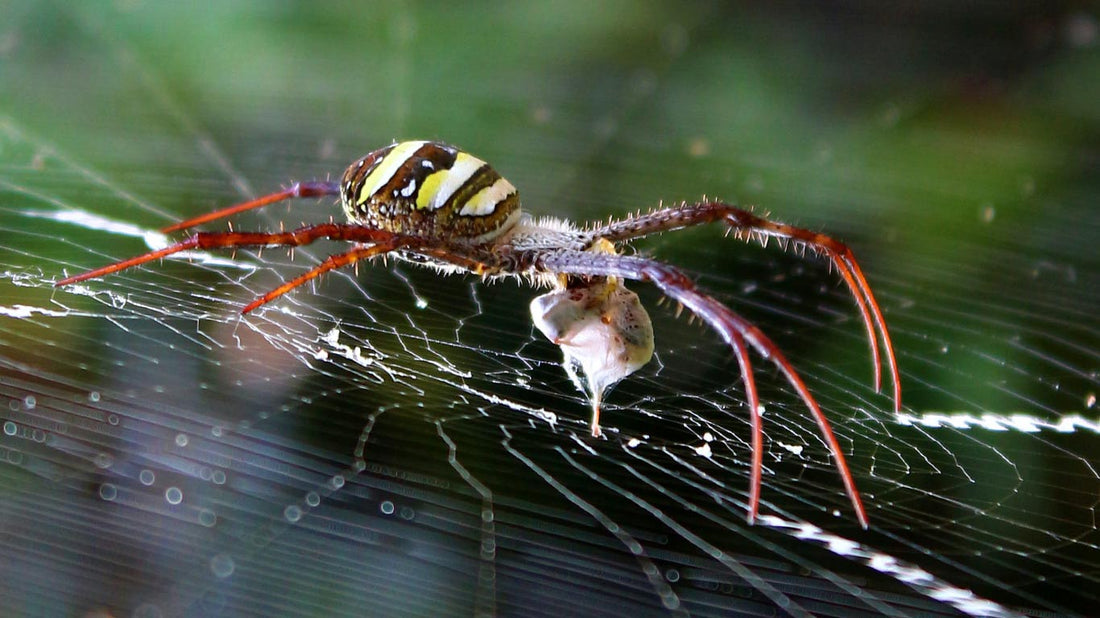
When gearing up for an outback adventure, our focus typically gravitates towards the essentials: ensuring an adequate water supply for hydration, packing bandages to address scrapes and scratches, and packing enough food to last the journey. While these elements are absolutely crucial for ensuring a safe trip, we can't forget about the additional layer of preparedness required for unforeseen emergencies.
One major emergency that Aussies fail to plan for involves little critters we'd rather not have to think about: spiders. In fact, the vast Australian terrain hosts more than 66 venomous species. From the notorious redback spiders to the seemingly harmless daddy long legs, the spectrum of danger resulting from a spider bite is extensive.

In this guide, we'll delve into the world of spider bites and help you to understand what to look out for and how to respond. So, let’s get into it.
What is a spider bite?
A spider bite occurs when a spider injects venom into the skin. Not all spiders are venomous, and the severity of a bite depends on the type of spider, the amount of venom injected, and individual reactions. While most spider bites cause mild reactions, some can be more serious and require immediate attention.
What kinds of spider bites are most common in Australia?
Australia is home to a wide range of spiders, each with its own unique characteristics. Two notable spiders known for their venomous bites are the Redback spider and the Funnel Web spider.

Redback spider bite symptoms
The Redback spider, easily identifiable by its red stripe on the abdomen, delivers venom that can lead to localised pain, sweating, and nausea. In severe cases, it may cause muscle weakness, difficulty breathing, and even unconsciousness. If you are bitten by a Redback spider, it’s important to seek immediate medical attention.
Funnel Web spider bite symptoms
The Funnel Web spider is another venomous species found in Australia. Its bite can lead to symptoms such as severe pain, muscle spasms, sweating, and increased heart rate. Funnel Web spider bites are considered medical emergencies, and immediate professional help is vital.
How can you identify a spider bite in Australia?
Recognising a spider bite can be challenging as reactions vary from person to person. Some of the key signs you have been bitten by a spider include:
- Localised pain: Spider bites often cause pain at the bite. This pain can range from mild to severe, depending on the spider species.
- Redness and swelling: Inflammation around the bite area is a typical reaction to spider venom.
- Itching and rash: Itching is a common symptom of spider bites. Some individuals may develop a rash around the affected area.
- Muscle pain and weakness: Venom from certain spiders can cause muscle pain and weakness. This is particularly true for bites from spiders like the Redback and Funnel Web.
- Nausea and headache: Systemic reactions can lead to symptoms such as nausea and headaches. If these symptoms persist or worsen, it’s important to seek medical attention as soon as possible.
Are there always marks after a spider bite?
Contrary to popular belief, not all spider bites leave visible marks. While some bites may result in redness or a small puncture, others may be nearly invisible. It's essential to focus on symptoms and reactions rather than solely relying on the presence of marks.
What does a spider bite look like?
The appearance of a spider bite can vary widely. In some cases, you may notice a red, swollen area with a central puncture mark. Other bites may present as a more generalised red rash. It's essential to pay attention to the overall symptoms and seek medical advice if in doubt.

Responding to spider bites in Australia
If you suspect a spider bite, follow these general guidelines:
- Clean the bite area: Wash the bite site with mild soap and water to reduce the risk of infection.
- Apply a cold compress: Use a cold compress or ice pack to alleviate pain and reduce swelling.
- Keep the area elevated: Elevate the affected limb if possible to minimise swelling.
- Pain relief medications: Over-the-counter pain relievers such as ibuprofen can help manage pain and discomfort.
- Seek medical attention: If symptoms are severe, or if you suspect a bite from a venomous spider like the Redback or Funnel Web, seek immediate medical attention. Emergency services should be contacted for serious symptoms, such as difficulty breathing or muscle spasms.
How to prepare for spider bites
When gearing up for outdoor adventures, ensuring you're prepared for unexpected situations, including spider bites, is crucial. Here are some essential tips on how to prepare for spider bites:
- Research spider species: Familiarise yourself with local spider species and their habits. This ensures you know what spiders you might encounter and where they might be hiding.
- Carry a first aid kit: Include a first aid kit such as a Rescue Swag in your essentials. Our compact, all-in-one first aid kits are equipped with bandages, antiseptic wipes, and other necessities, ensuring you're equipped to address spider bites promptly.
- Insect repellent: Pack insect repellent for an extra layer of protection against spider encounters. Apply it to exposed skin and clothing for added assurance.
- Wear protective clothing: Wear durable and compact clothing such as long pants and long-sleeved shirts. These provide protection against insect bites, including spiders.
- Inspect camping gear: Utilise educational resources to learn effective ways to inspect camping gear and spot potential spider hiding spots and ensure a safe camping environment. This includes hidden nooks and crannies like in your sleeping bag.
- Shake out shoes and clothing: Spiders love to hide in dark and damp places, making your shoes a great spot. Ensure you shake out your shoes and clothing before wearing them
- Emergency contacts: Keep a list of local emergency contacts in your kit. Having quick access to essential numbers in the event of a spider bite is crucial.
- Carry antivenom if travelling to high-risk areas: Depending on your destination, ensure you pack relevant antivenom. Check for customised solutions based on your travel plans.
- Learn first aid for spider bites: While you can do everything in your power to prevent a spider bite, in the case that you are bitten, it is important to know how to treat it. From online guides like these to detailed breakdowns, ensure you enhance your first aid skills ahead of time.
- Stay informed: Stay up to date on the latest first aid and outdoor safety practices, particularly those that are relevant to the area you are travelling to. Follow their updates and tips to stay informed about spider activity.
The best first aid kit for spider bites in Australia
When it comes to preparing for spider bites in Australia, having the right first aid kit can make all the difference. Rescue Swag offers premium snake and spider bite kits designed to address the serious dangers posed by Australia's unique wildlife. Here are two options to consider:

Premium Snake and Spider Bite Kit
This comprehensive and compact kit is the answer to Australia's summer dangers. Suitable for the treatment of all Australian snake and funnel webbed spider bites, as well as blue-ringed octopus and cone shell stings.

Recognised as the best compact, portable, and water-resistant first aid/snake bite kit on the market, the Explorer Rescue Swag is designed for those on the go. Ideal for outdoor enthusiasts, the kit contains essential medical supplies for snake bites and minor injuries, making it a perfect companion while travelling in rural, regional and remote Australia.
Conclusion
Being prepared for an outback adventure involves more than just packing essentials. Understanding the potential risks you may encounter, including Australian spider bites, is crucial for a safe and enjoyable experience. By familiarising yourself with common spider species, recognising symptoms, and knowing how to respond, you can navigate the Australian wilderness with confidence and resilience.
Stay informed, stay prepared, and enjoy your outback adventure responsibly.

